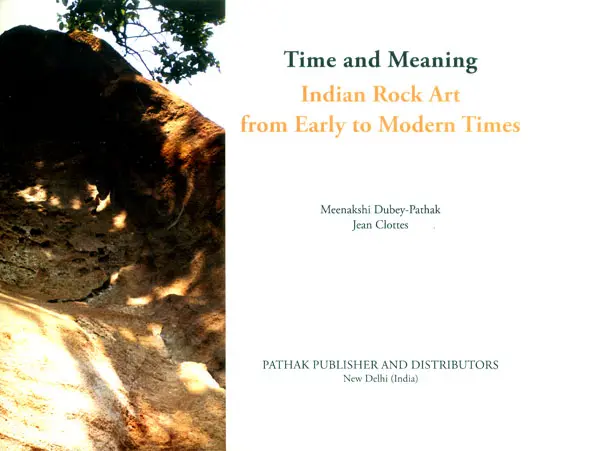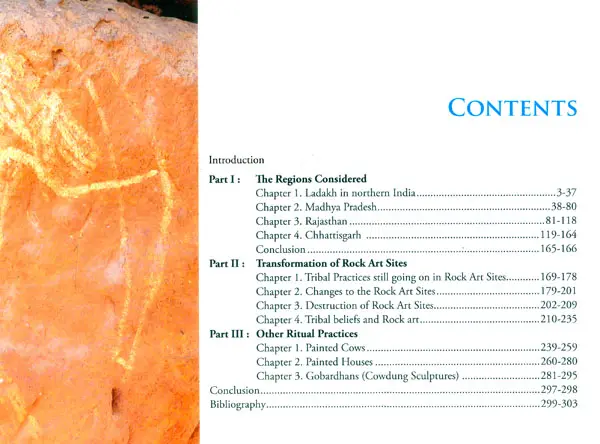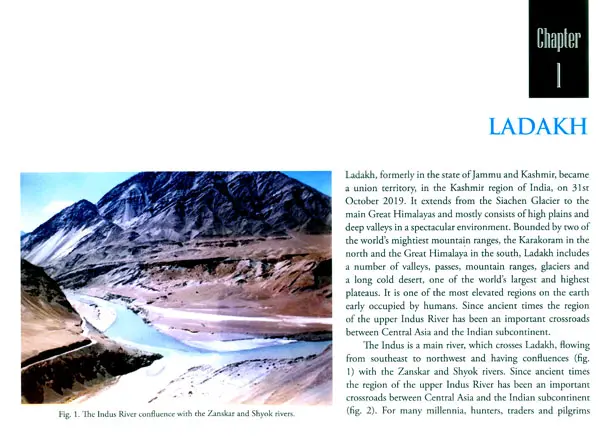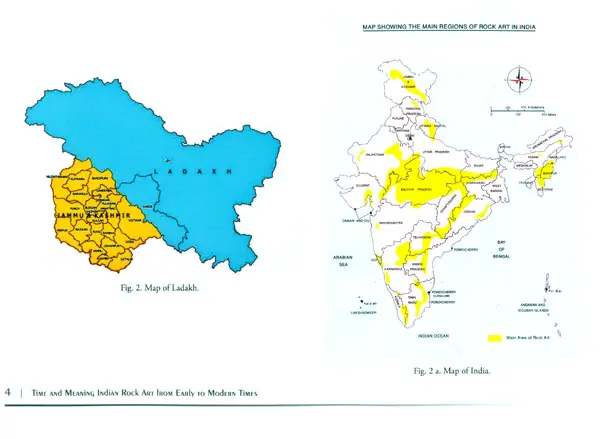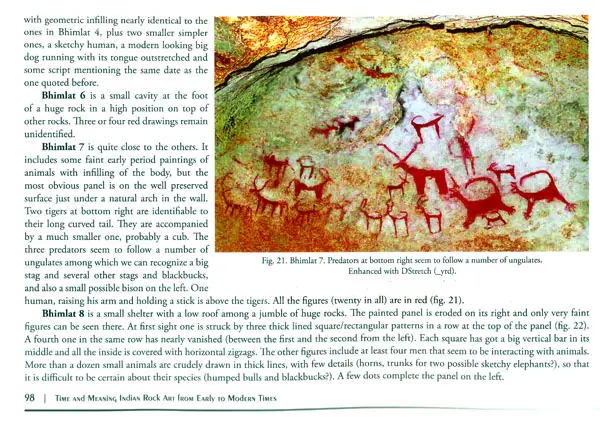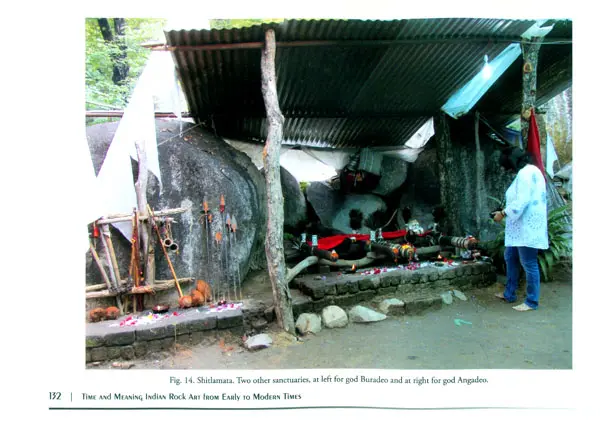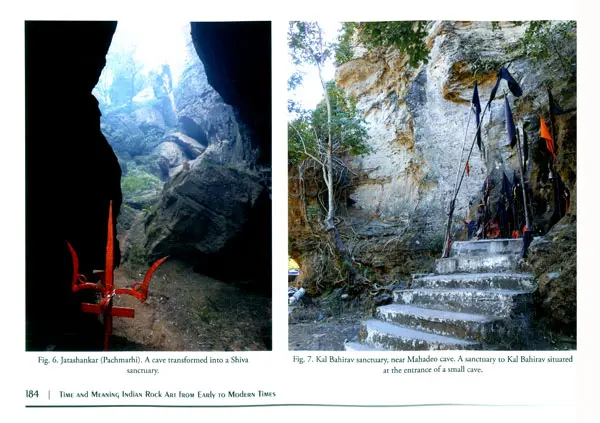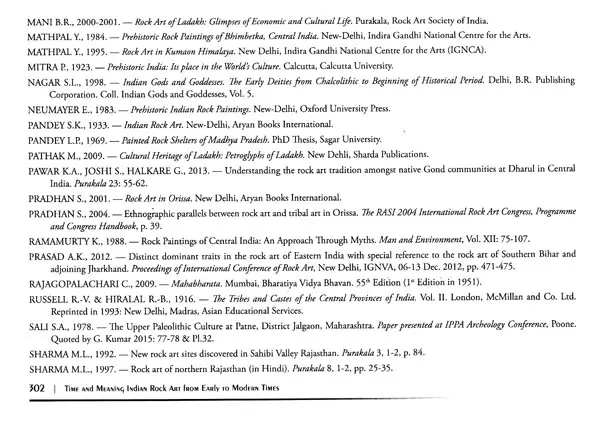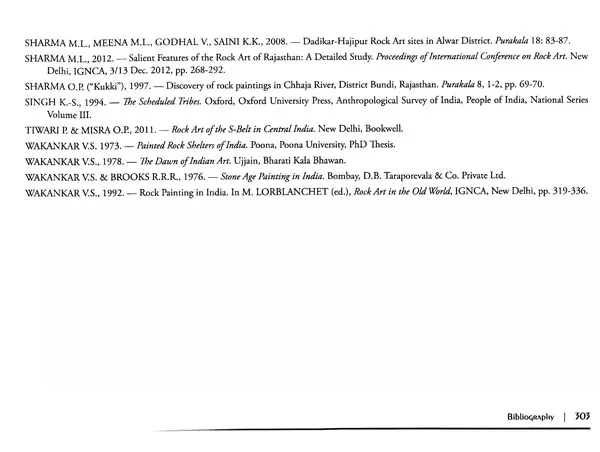
Time and Meaning- Indian Rock Art From Early to Modern Times
Book Specification
| Item Code: | UBE814 |
| Author: | Meenakshi Dubey and Pathak jean Clottes |
| Publisher: | Pathak Publisher and Distributors |
| Language: | English |
| Edition: | 2023 |
| ISBN: | 9789391952150 |
| Pages: | 310 (Throughout Color Illustrations) |
| Cover: | HARDCOVER |
| Other Details | 9.50 X 13.00 inch |
| Weight | 1.80 kg |
Book Description
She has devoted nearly thirty years of her life to the discovery, study, publication, exhibitions, workshops and protection of Indian Rock Art. This has already eamed her a deserved international recognition. She has published many papers and four books: "Rock Art of Pachmarhi Biosphere", Delhi, BR Publications, 2012. "Des Images pour les Dieux. Art rupestre et Art tribal dans le Centre de l'Inde (with Jean Clottes). Arles (France), Éditions Errance, 2013. "Powerful Images. Rock Art and Tribal Art of Chhattisgarh" (with Jean Clottes). Bloomsbury Publications, 2017. "Madhya Pradesh Rock Art and Tribal Art" (with Jean Clottes), INTACH and Aryan Books International. She was Internationally awarded the high honour of Chevalier des Arts Lettres'-Knight in the National Order of Arts and Letters- by the French Minister of Culture and Communication in 2014.
She is an International Expert for rock art with ICOMOS and UNESCO. She was awarded Heritage Fellowship with Ministry of Culture, France. Also She is a Wakankar Senior Research Fellow.
Film on the "Central Indian Rock Art and Tribal Art", based on her research work, screened and awarded in the International Archaeology Film Festival in Nyon, Switzerland. March 2019.
She is a member of the Bradshaw Foundation Advisory Board (England) and a member of the Rock Art Network of the Getty Foundation (US).
Dr Jean Clottes studied at Toulouse University He was a Director of Prehistoric Antiquities for Midi Pyrénées from 1971 onwards, and after being a General Inspector for Archaeology at the Ministry of Culture (1991) he became a Scientific Advisor at the same Ministry for everything relating to prehistoric rock art, a position he held until his official retirement in July 1999.
He created and directed the International Newsletter on Rock Art (INORA). He has taught courses at the Universities of Toulouse (France). Neuchâtel (Switzerland), Gerona (Spain), Buenos Aires (Argentina, INAPL), Berkeley (USA), Victoria (Canada).
He is also an International Expert for rock art with ICOMOS and UNESCO.
He has published or co-published 30 books, directed 13 others and more than 600 papers. Seven of his books (and many papers) have been published in English: The Cave Beneath the Sea (Harry Abrams, 1996); The Shamans of Prehistory, with D. Lewis-Williams (Harry Abrams, 1998); World Rock Art (Getty Foundation, 2002); Chauvet Cave: the art of earliest times (ed.) (The University of Utah Press, 2003); Cave Art (Phaidon, 2008); with Meenakshi Dubey-Pathak). "Powerful Images. Rock Art and Tribal Art of Chhattisgarh Bloomsbury Publications, 2017. "Madhya Pradesh Rock Art and Tribal Art" (INTACH and Aryan Books International).
A worked red hacmatite stone engraved with lines and crosses was found at Blombos (South Africa) and dated to around 75,000 BR In the same country, at Diepidoof, excavations revealed ostrich shells decorated with bands of geometric motifs dated to 60.000 BP Except for these very few artefacts, the oldest art known in the world so far is in the range of 35,000 to 40,000 BP or so in Europe and also in Indonesia where hand stencils dated around 40,000 BP were found in the Sulawesi cave. A recent discovery has been dased 45,000 BP in a Sulawesi cave. It includes portable art such as the spectacular animal and human ivory statuettes found in four German Aurignacian shelters but also rock art, Le paintings or engravings made on the walls of caves or shelters, mostly in deep European caves from France and Spain. But Palacolithic rock art is also known in England. Portugal, Italy, Rumania, Croatia and Russia.
In India, our colleagues Robert Bednarik and Giriraj Kumar have a number of times proposed that our earliest prehistoric art coruined of cupules, basing their claim mostly on the sites of Bhimbetka (Auditorium Rock) and of Daraki-Chattan, both in Madhya Pradesh, which they ascribe to the Acheulean, perhaps 200,000 years ago or more.
**Contents and Sample Pages**
